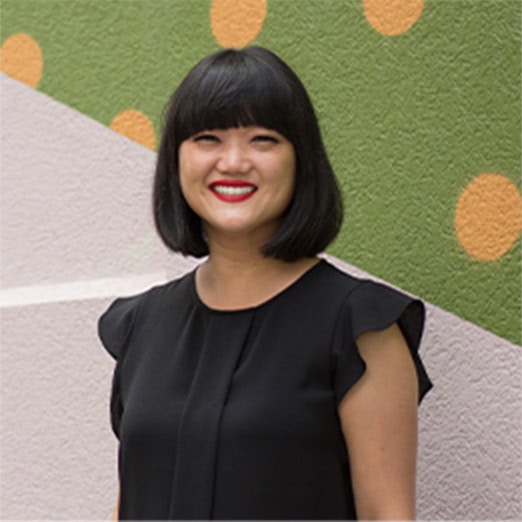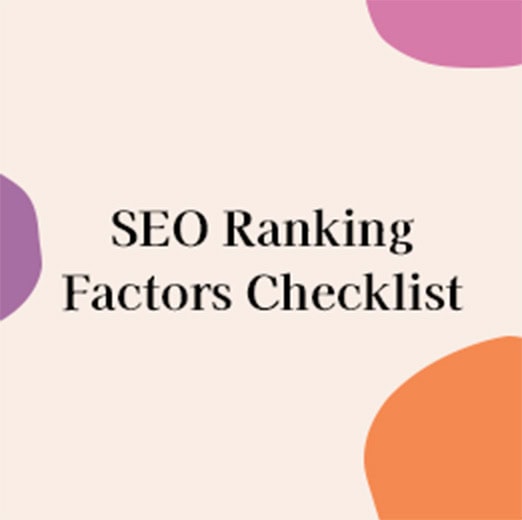The Expert's Guide to Fashion Design Industry Terminology
Launching a new fashion clothing line can be exciting and overwhelming at the same time. In the beginning, you may be the one doing most of the work yourself. If you have some formal training in the fashion industry, that could make the process go a bit smoother when it comes to getting your line developed and produced. However, running a fashion business involves more than just designing and producing products. It involves, planning, budgeting, marketing and distributing your products. To help you navigate the complex world of running a fashion business, I put together an in-depth list of common fashion industry terminology to help you act and feel like a pro.
Fashion Design Industry Terms
Fashion Designer is a professional who creates new clothing styles, accessories, or footwear designs based on consumer demand or artistic inspiration. Fashion designers use a combination of creativity, technical skills, and business acumen to develop and produce their collections, which may be sold through various channels such as retail stores, e-commerce, or runway shows.
Haute couture is a French term that refers to high-end fashion design and creation of custom-made clothing, typically using expensive and high-quality materials. The term "haute couture" is legally protected and only certain fashion houses are allowed to use it.
Ready-to-wear is a term used to describe clothing that is mass-produced and available in standard sizes, typically sold in retail stores. Ready-to-wear clothing is designed to be more affordable and accessible than haute couture.
Fashion week is a biannual event held in major fashion capitals around the world where fashion designers showcase their collections for the upcoming season. Fashion week typically includes runway shows, presentations, and other events.
Capsule collection is a small collection of clothing items, typically 10-15 pieces, that is designed to be versatile and cohesive. Capsule collections are often released as a limited edition and are meant to be mixed and matched to create multiple outfits.
Runway show is a fashion event where models showcase designer clothing on a runway or catwalk. Runway shows are typically held during fashion week or other fashion events.
Textile design is the process of creating patterns and designs for fabrics. Textile designers use a variety of techniques, including drawing, painting, and digital design software.
Fashion sketching is the art of drawing fashion designs by hand. Fashion sketches are used by designers to communicate their ideas and vision for a particular garment or collection.
Mood board is a collage of images, fabrics, and other visual elements that are used to create a particular mood or aesthetic. Mood boards are often used by designers to develop their ideas and to communicate their vision to others.
Fashion forecasting is the process of predicting upcoming fashion trends and styles. Fashion forecasting involves analyzing consumer behavior, market trends, and other factors that may influence fashion trends.
Some popular fashion forecasting services include:
- WGSN: A trend forecasting company that forecasts consumer, lifestyle and product design trends.
- Fashion Snoops: A trend forecasting company that offers insights on fashion, accessories, beauty, and home décor trends.
- Trendstop: A trend forecasting company that provides analysis on fashion, beauty, lifestyle, and retail trends.
- Edited: A data-driven fashion forecasting company that offers insights on product trends, pricing strategies, and assortment planning.
- The Doneger Group: A fashion trend forecasting company that offers insights on color, fabric, and style trends.
Trend analysis is the process of analyzing fashion trends to identify patterns and predict future trends. Trend analysis involves studying fashion history, consumer behavior, and other factors that may influence fashion trends.
Fabric swatches are small pieces of fabric used for sampling or testing to evaluate color, texture, quality, and other attributes. Fabric swatches are often provided by textile manufacturers, suppliers, or designers to aid in the selection and design process.
Fabric manipulation is the process of manipulating fabrics to create unique textures, shapes, and patterns. Fabric manipulation techniques may include pleating, gathering, smocking, and embroidery.
Drape is the way that fabric falls and hangs on the body. Drape is an important consideration in garment design, as it can greatly affect the overall look and fit of the garment.
Fit is the way that a garment conforms to the body. Good fit is essential in clothing design, as it can greatly affect the comfort and appearance of the garment.
Seamstress is a person who sews garments and other textile products. Seamstresses may work in a variety of settings, including factories, tailoring shops, and costume design studios.
Fashion Business Terms
Fashion buyer is a person who is responsible for selecting and purchasing clothing and accessories for a retail store or fashion brand. Fashion buyers must have a keen eye for fashion trends and be skilled negotiators.
Merchandising is the process of promoting and selling fashion products. Merchandising involves a variety of activities, including product selection, pricing, and promotion.
Branding is the process of creating a unique name, symbol, design, or image that represents a company, product, or service in the market. The purpose of branding is to differentiate a business from its competitors and create a memorable and recognizable identity for consumers.
Fashion marketing is the process of promoting and selling clothing, accessories, and other fashion products to target customers. It involves understanding consumer preferences and trends, creating marketing campaigns that resonate with them, and using various marketing channels to reach them.
Public relations, often shortened to PR, is the practice of building and maintaining relationships between an organization and its stakeholders, including customers, investors, employees, and the general public. PR involves developing and disseminating messages that shape public opinion and perception of the organization.
Bootstrapping refers to the process of starting and growing a business with little or no outside funding. Bootstrapping entrepreneurs rely on their own resources, including personal savings, revenue generated from the business, and sweat equity, to launch and grow their ventures.
Styling is the process of creating an outfit or look by selecting and coordinating clothing, accessories, and other fashion items. Stylists use their creativity and knowledge of fashion to create a cohesive and aesthetically pleasing look.
Accessorizing is the process of adding complementary items, such as jewelry, scarves, belts, and hats, to an outfit to enhance its style and visual interest.
Fashion editorial refers to a written or visual piece, such as a magazine article or photo spread, that showcases fashion trends, styles, and products. Fashion editorials often feature high-quality photography and are intended to inspire and inform readers about the latest fashion trends.
Fashion photography is a genre of photography that focuses on capturing clothing, accessories, and other fashion products in a visually appealing way. Fashion photographers work with models, stylists, and other professionals to create images that showcase the latest fashion trends and products.
Fashion illustration is the art of creating drawings or paintings of clothing, accessories, and other fashion products. Fashion illustrators use their artistic skills to create stylized and visually appealing representations of fashion products.
Fashion journalism is the practice of reporting on fashion trends, styles, and products through written, visual, or audio content. Fashion journalists cover fashion events, interview designers and industry professionals, and report on the latest trends and products in the fashion industry.
Fashion blogging involves creating and publishing content related to fashion trends, styles, and products on a blog or other online platform. Fashion bloggers often work with brands and retailers to promote their products and offer styling tips and advice to their readers.
Sustainable fashion refers to clothing and accessories that are produced using environmentally friendly, ethical and socially responsible practices. Sustainable fashion aims to reduce the environmental impact of the fashion industry and promote fair labor practices throughout the supply chain.
Wholesale refers to the sale of goods in large quantities at a discounted price to retailers, distributors, or other businesses. Wholesale buyers often purchase goods from manufacturers or suppliers and resell them to consumers at a markup.
Margins refer to the difference between the cost of producing or acquiring a product and the price at which it is sold. Gross margin is the difference between the revenue generated by a product and the cost of producing or acquiring it, while net margin is the difference between revenue and all costs, including operating expenses and taxes.
Keystone Markup in retail refers to a pricing strategy where the retail price of a product is set at double the wholesale cost, with the idea that the retail price covers both the cost of goods sold and provides a standard profit margin for the retailer. In this context, the "keystone" refers to the practice of marking up the cost by 100%. For example, if a retailer purchases a product from a wholesaler for $50, they would set the retail price at $100 (50 * 2) using the keystone pricing method.
Fashion Production & Garment Manufacturing Terms
Fashion production is the process of garment manufacturing and typically involves a wide range of terms.
Sourcing is the process of finding, evaluating, and selecting suppliers, manufacturers, or vendors to provide the necessary materials, products, or services for a business. Sourcing can involve negotiating contracts, establishing quality standards, and managing relationships with suppliers to ensure timely delivery and cost-effectiveness.
Supply Chain is the interconnected network of businesses, organizations, and individuals involved in the production, transportation, and distribution of goods and services. A typical supply chain includes raw material suppliers, manufacturers, distributors, wholesalers, retailers, and consumers. Effective supply chain management is essential for ensuring timely delivery, quality control, and cost efficiency.
Leadtime refers to the time it takes to procure, produce, and deliver a product to the customer. Lead time can be affected by various factors, such as availability of raw materials, production capacity, transportation, and logistics.
Tech packs are used to provide detailed information about the product and its construction. Tech packs include a garment spec sheet that has the body measurements, and an area called the bill of materials (BOM) that has all the details and trim information including a sketch- at least a front and a back with additional details attached to it. It usually has the comments section as well.
Pattern making involves creating the pattern or blocks that is used to produce the garment. The garment has pieces that need to be cut and sewn together. So patterns need to be made for those pieces to be able to be cut out and then stitched together.
Sample making is the process of creating a prototype or sample of a garment based on the pattern. Sample making is typically done to test the fit, design, and overall quality of the garment.
Garment construction is the process of assembling the various parts of a garment, such as the sleeves, collar, and hem, into a finished product. Garment construction requires skill and precision to ensure that the finished product is of high quality.
Grading is when you are scaling (the patterns) up or down to various sizes. The measurements that you put in from each size goes up by a certain amount in measurements, that’s typically indicated on the specification sheets.
Markers are what the cutters at the factory use to cut out the pattern pieces when it comes to production.
Pre-production is a crucial stage in which samples are produced and tested for quality control before mass production begins.
MOQ stands for minimum order quantity. That’s an industry term that most manufacturers use to talk about production minimums.
Lean Manufacturing is a systematic approach to achieving the shortest possible cycle by identifying and eliminating waste from the production process and offering continual improvement. By implementing lean manufacturing principles, garment manufacturers can improve productivity, reduce lead times, lower production costs, enhance quality, and respond more effectively to changing customer demands and market conditions.
Different samples are needed for different purposes. Here are the 5 most common types of samples:
1. Prototype sample is the first physical representation of a product that is created during the product development process. It is typically used to test and refine the product design before moving to the next phase of production.
2. Salesman samples are typically used by sales representatives to showcase a product to potential buyers or customers.
3. Counter samples is a sample created by a manufacturer to match a specific design or sample provided by a customer. These samples are typically created to ensure that the final product meets the customer's specifications and requirements.
4. Pre-production sample is a sample created to test the manufacturing process and ensures that the final product meets the desired specifications. It is created before mass production begins.
5. Production sample, also known as TOP (Top of Production) sample, is the first sample produced during mass production. It is used to check the quality of the production run and ensure that the final product meets the desired specifications.
Apparel Production Systems- Depending on the scale and complexity of production, different systems can be utilized such as domestic/offshore manufacturing, modular production system, progressive bundle system, unit production system or piece rate system. All these factors must be taken into account when managing fashion production in order to ensure efficiency and quality control throughout the entire process.
In conclusion, the fashion industry is a complex and ever-changing world that requires a deep understanding of its terminology. Understanding fashion industry terms is essential in creating and communicating ideas effectively in the industry. Additionally, utilizing the proper terminology shows a level of professionalism and expertise in the field.
As the fashion industry continues to evolve and innovate, new terminology will continue to emerge. By staying up-to-date with the latest trends and developments, you can position yourself as a knowledgeable and valuable member of the fashion community.
If you are looking for a fashion design business consultant to help you launch and grow your fashion e-commerce brand book your call with me: https://calendly.com/glynistao/book-a-call




